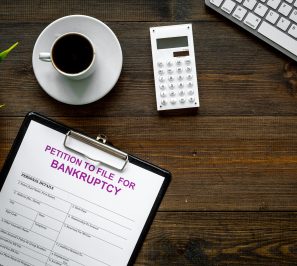Blog
Can I File for Bankruptcy More Than Once?

When facing money problems, it can often feel like an endless battle. It’s not uncommon for people to consider bankruptcy as a path of hope and a way to break free from the relentless waves of debt. But what if you’ve sought the refuge of bankruptcy in the past? Can you file for bankruptcy more than once? Yes, you indeed can, albeit with certain caveats and restrictions.
The United States Bankruptcy Code is crafted with compassion, aiming to provide relief to the debt-ridden and not to penalize them. Consequently, you can file for bankruptcy multiple times. However, the frequency of filings is capped by certain time constraints, which are dependent on the specific chapters of bankruptcy you opt for.
In the complexity of bankruptcy laws, two types often stand out: Chapter 7 and Chapter 13. Chapter 7, also known as “liquidation bankruptcy,” permits the discharge of many unsecured debts. However, if you’ve previously filed under this chapter, you’ll need to wait for eight years from the date of your original Chapter 7 filing to file again.
Chapter 13, otherwise known as the “wage earner’s plan,” necessitates a structured repayment strategy to pay back debts over 3 to 5 years. If you’re considering filing for Chapter 13 bankruptcy following a previous Chapter 13 filing, the law requires a waiting period of two years.
The waters get murkier when you’ve filed under one chapter and wish to file under another. For instance, if you’ve previously filed a Chapter 7 bankruptcy and now want to file a Chapter 13 (informally referred to as a ‘Chapter 20’ bankruptcy), you’re looking at a wait time of four years. In contrast, a ‘Chapter 26’ bankruptcy, filing a Chapter 7 after a Chapter 13, demands a waiting period of six years, barring situations where a significant part of your unsecured debts were repaid in the original Chapter 13 plan.
Exceptions and intricate details lace these general rules. Cases where a previous bankruptcy filing was dismissed without a discharge or when a hardship discharge is pursued in a Chapter 13 case are prime examples. These complex rules can be navigated smoothly with the guidance of a proficient bankruptcy attorney like Karen Evangelista P.C.
The notion of filing for bankruptcy more than once might be intimidating. It’s crucial to remember, though, that bankruptcy laws aim to provide relief rather than punishment. However, serial filings can raise red flags about potential bankruptcy fraud, underscoring the importance of honesty and transparency in this process.
It’s worth noting that bankruptcy isn’t a decision to make on a whim. It casts a long shadow on your credit score and overall financial wellbeing. Consulting a knowledgeable bankruptcy attorney is recommended to grasp the full spectrum of your options and the repercussions of each.
In conclusion, yes, you can file for bankruptcy more than once. But the path is paved with complications and time constraints. For guidance and support in making informed decisions about your financial future, reach out to seasoned bankruptcy attorney Karen Evangelista P.C. to schedule a consultation today.



